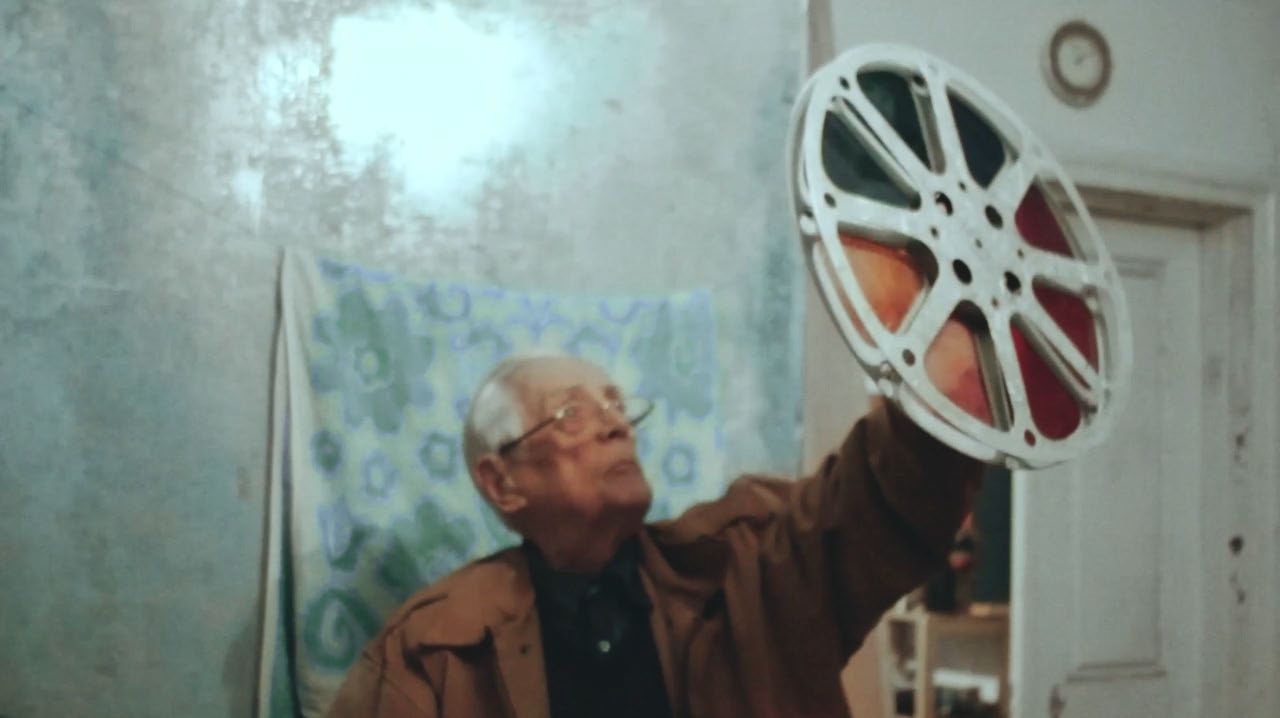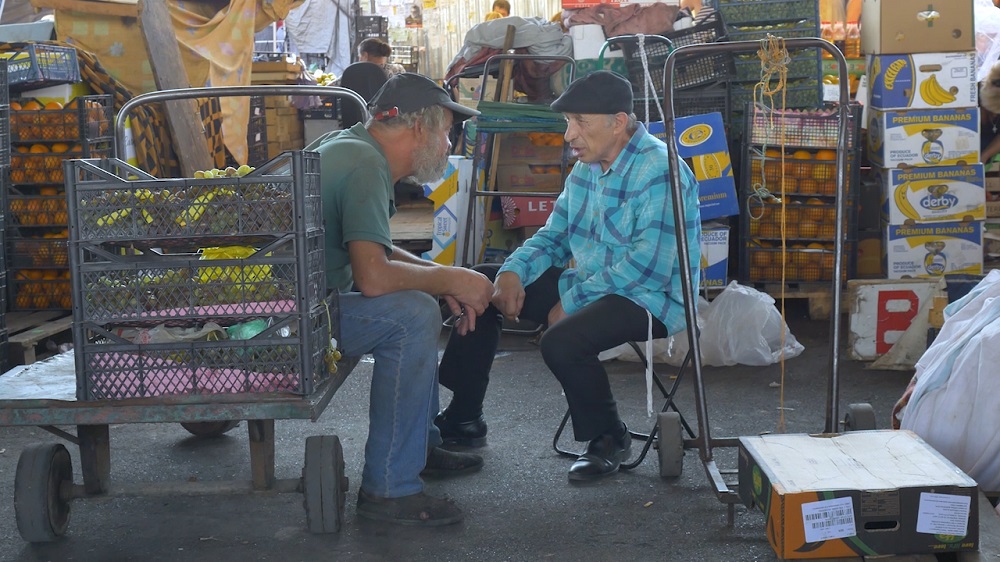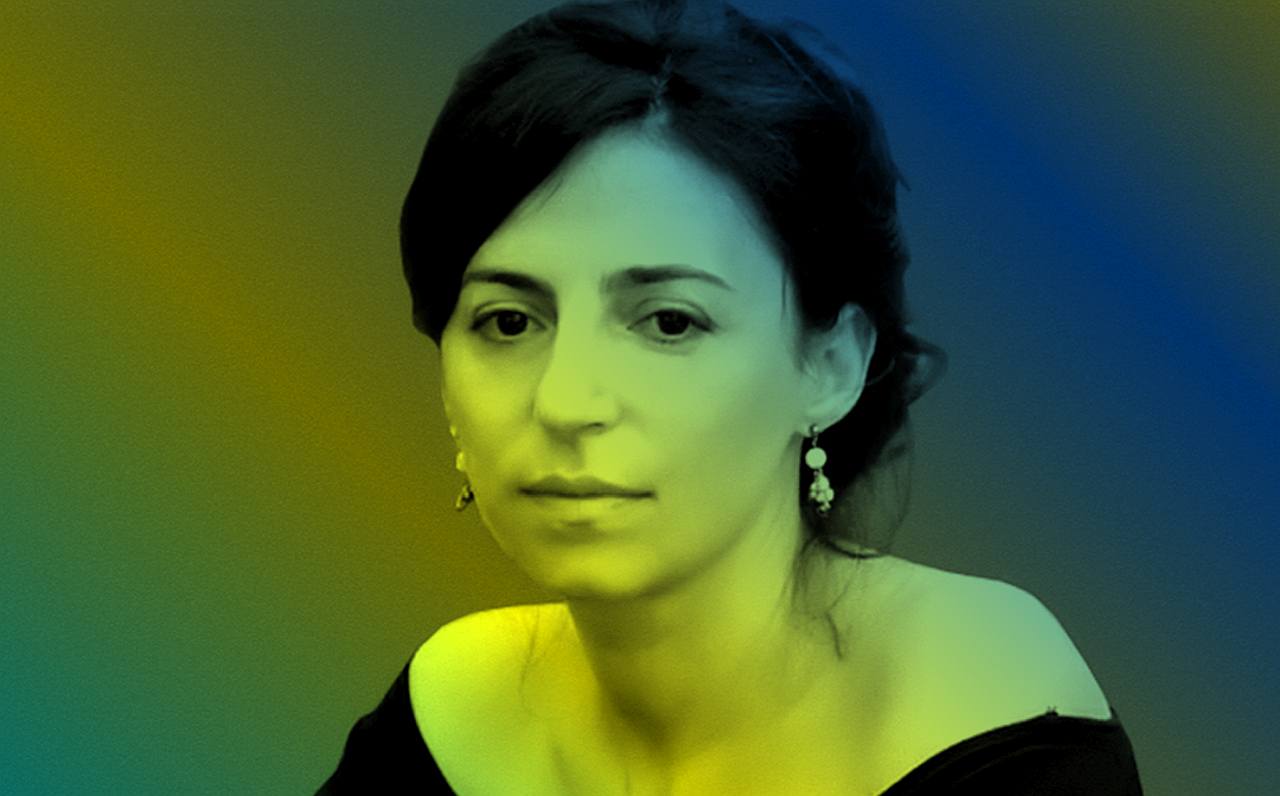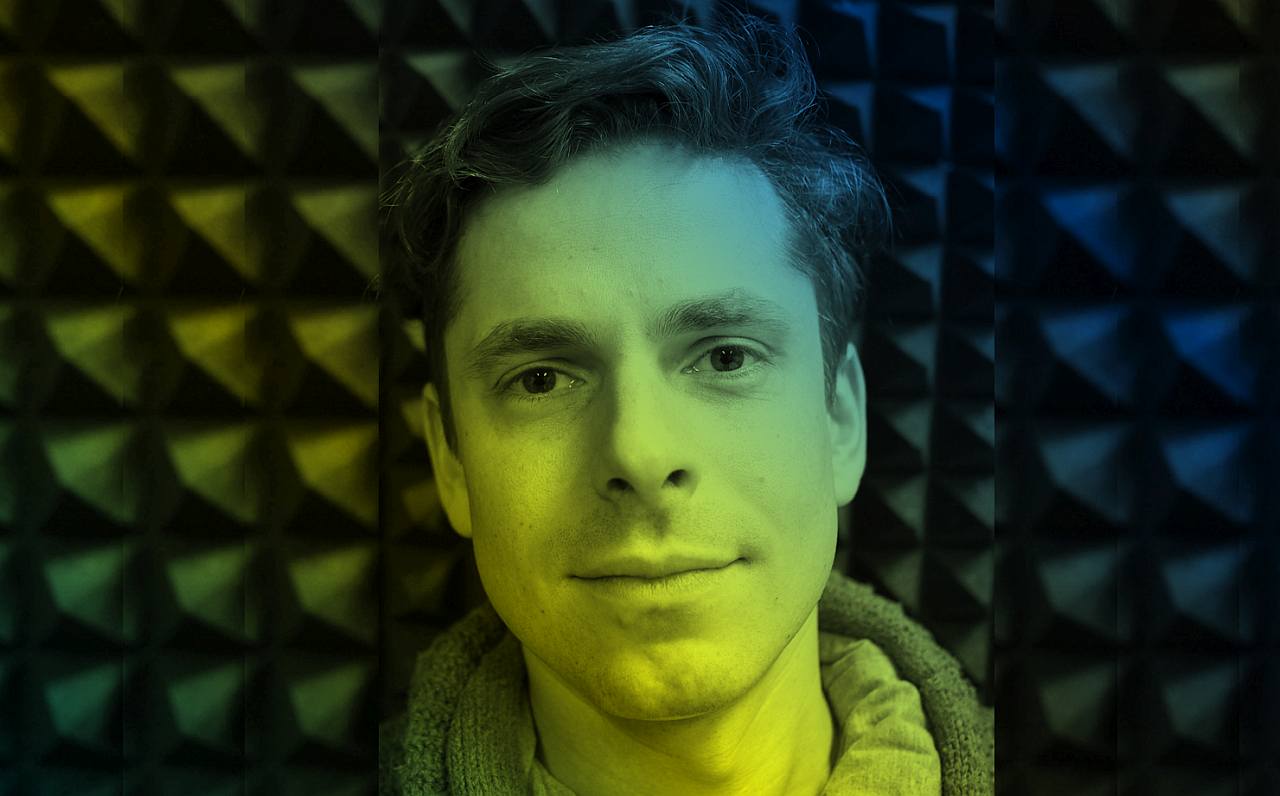The Docudays UA International Human Rights Documentary Film Festival is the largest documentary film festival in Ukraine. This year’s edition was to begin on 25 March in Kyiv. It’s no longer possible due to Russia’s brutal attack and the ongoing war.
The latest Ukrainian documentary films – qualified for Docudays UA’s prestigious national competition – will be presented during the Krakow Film Festival. The films screened in Kraków will be treated as domestic (Ukrainian) premieres, allowing them to maintain the status of international premieres and provide creators with an open path to apply to other prestigious film events.
- Mountains and Heaven in Between, dir. Dmytro Hreshko, UKR, 70’
- Boney Piles, dir. Taras Tomenko, UKR, 80’
- Infinity According to Florian, dir. Oleksiy Radynsk, UKR, USA, 70’
- Plai. A Mountain Path, dir. Eva Dzhyshyashvili, UKR, 75’
- Pryvoz, dir. Eva Neymann, UKR, 72’
Please read the interviews with Oleksiy Radynsky, director of “Infinity According to Florian” and Eva Neymann, director of “Pryvoz”




DOCU/UKRAINE in Focus: Eva Neymann
Pryvoz by Eva Neymann documents the life of the eponymous market in Odesa. Film critic Aliona Penziy has talked to Eva Neymann about her work on the film and about the city’s main market before and during the war.
You are a prominent Ukrainian feature film director, what prompted you to make a documentary?
To be honest, I love working in documentary filmmaking. Probably more than in fiction. For some reason, it’s easier for me to be happy here. In general, working in documentary filmmaking is pure romanticism.
The point of the filming process in documentary film is to look for encounters with surprises. Filmmakers must realize the uniqueness of the moment and constantly be ready to improvise. And the film crew becomes a part of the reality they want to capture. It’s an opportunity to be introduced to the worlds which you wouldn’t encounter in regular life.
Feature films also have their own romantic aspect, but it’s at a different level. The difference between these two romanticisms is like the difference between a planned trip (with a hotel booking, tours, tickets, concerts and restaurants) and a “wild vacation” (barely any money, a weird concept of comfort, risk but also freedom, spontaneity and maximum adrenaline).
Would you say that the market in your film represents Odesa or even the entire region?
The thing is, since my student works, I’ve shot all of my films in Odesa. This city has special significance for me. And Pryvoz is, of course, its essence. At the same time, the vendors at the market aren’t always from Odesa: people bring their wares to Pryvoz from all the suburbs. So yes, you could say that Pryvoz represents the entire region.
How many people did you have in your film crew and how did you work with sound at such a difficult location?
Documentary filmmaking is a very intimate process where even one person can be too much. So the film crew was small: two, sometimes three people.
We all sometimes witness a certain situation, sometimes fragments of conversations we hear stay in our memory forever. But we try to be polite if we mishear something: usually we don’t ask people to repeat their words in order to avoid embarrassing them with excessive attention. A directed microphone is always inappropriate. A camera, strange as it may sound, is a more discreet tool: the camera person can stay at a distance which doesn’t make a person feel that we’re prying, even if they know that they are being looked at. So my main goal was to be an accidental witness of scenes from life, not to film interviews. This approach made the sound recording process significantly more complicated. Actually, I still think it’s a miracle that the film even has sound. I’m so grateful for this to the sound editors and the high-quality post-production.
What was the principle you used to select characters for your film?
I filmed people whom I liked and found interesting. Some of them I’ve known for a while, others I met during the filming. Pryvoz has a lot of various beautiful people who capture your attention.
At which stage of working on the film did you develop an understanding of its form?
I really wanted to work at Pryvoz, but at the same time my main motive in working on this film was the desire to be happy for a while, to live a full life, to have enough of everything. I was prepared for sadness and joy, unrevealed secrets and other people’s dreams. All of this from dawn to dusk and from one summer until the next summer. You could say that the film’s structure was born at the same time as the desire to make the film. But life is always richer than you can predict. So we had a lot to do during editing.
How long did it take for people at the market to get used to the presence of a film crew and stop reacting to you?
There are so many people at the market: some are selling eggs, some fish, the guard has a radio and I have a camera. I went there to work, just like everyone else. In general, people were very understanding of my work, and we worked together, as you do at a market. But I remember one underwear vendor, his wares were hanging on a rope, and he was napping. As soon as he opened his eyes, he asked, “So you’re filming, right? Don’t you have anything to do?”
Do you monitor how the life of Pryvoz has changed in our time and whether its functions have changed in any way?
Today that is the saddest question. Pryvoz no longer exists in the form in which the film portrays it, because it’s been reconstructed. But still, it’s a special place with special energy. Now, during the war, the market continues working. I really hope that soon I’ll be able to go there again and make sure that life is fuller than we assume.
Один з фільмів програми – «Привоз» режисерки Єви Нейман, який документує життя однойменного ринку в Одесі. Кінознавиця Альона Пензій поспілкувалася з Євою Нейман про роботу над фільмом та головний ринок міста до та під час війни.
Ви є відомою українською режисеркою ігрового кіно, що вас підштовхнуло зняти документальний фільм?
Чесно кажучи, я дуже люблю працювати у документальному кіно. Мабуть, більше, ніж в ігровому. Тут у мене чомусь легше виходить бути щасливою. Загалом працювати з документалістикою — це чиста романтика.
Суть знімального процесу документального кіно — це пошук зустрічі з сюрпризами. Творці фільму мають усвідомлювати неповторність моменту й постійно бути готовими до імпровізацій. При цьому знімальна група стає частиною тієї реальності, яку хоче зафіксувати. Це можливість познайомитись зі світами, до яких у звичному житті не потрапиш.
В ігрового кіно теж є своя романтика, але вона іншого порядку. Різниця між цими двома романтиками — як між запланованою поїздкою (заброньований готель, екскурсії, квитки, концерти й ресторани) та «відпусткою дикуном» (грошей обмаль, уявлення про комфорт специфічне, ризик, але й свобода, спонтанність й максимальний адреналін).
Чи можна сказати, що ринок у вашому фільмі є репрезентацією Одеси або навіть цілого регіону?
Так сталося, що всі свої фільми, починаючи зі студентських робіт, я знімала в Одесі. Саме це місто має для мене особливе значення. І ринок «Привоз», безумовно, є його есенцією. Одночасно продавці та продавчині ринку не завжди є одесит(к)ами: люди приїжджають з товаром на «Привоз» зі всіх околиць міста. Тому, так, можна сказати, що «Привоз» є репрезентацією цілого регіону.
Скільки людей містила знімальна команда і як ви працювали зі звуком на такій складній локації?
Документальне кіно — це дуже інтимний процес, в якому навіть однієї людини буває забагато. Тому знімальна група була маленька: дві, а іноді три людини.
Ми всі буваємо випадковими свідками тої чи іншої ситуації, інколи фрагменти почутих розмов залишаються в пам’яті назавжди. Та ми намагаємося поводити себе пристойно, якщо не дочули: зазвичай, не перепитуємо, щоб не збентежити співрозмовника/-цю надмірною увагою. Скерований мікрофон — це завжди недоречно. Камера, як це не дивно, є інструментом більш дискретним: оператор/-ка може бути на такій відстані, щоб у людини, навіть якщо вона знає, що на неї дивляться, не виникало відчуття, що до неї лізуть у душу.
Тому моя основна ціль полягала в тому, щоб бути випадковим свідком сцен життя, а не знімати інтерв’ю. Такий підхід суттєво ускладнював процес запису звуку. Загалом для мене досі є дивом, що у фільмі він є. Величезна вдячність за це — звукорежисерам та якісному постпродакшену.
За яким принципом ви відбирали героїв для фільму?
Я фільмувала людей, які мені були симпатичні та цікаві. Когось я знаю давно, з кимось познайомилася під час зйомок. На «Привозі» дуже багато різних красунь, які привертають до себе увагу.
На етапі роботи над фільмом склалося розуміння його форми?
Я дуже сильно хотіла працювати на «Привозі», і водночас моїм головним мотивом під час роботи над цим фільмом було бажання побути щасливою, пожити на повну силу, аби всього було вдосталь. Я готова була до смутку та радощів, нерозкритих таємниць та чужих снів. І так — з ранку до ночі та з літа до наступного літа.
Можна сказати, що структура фільму народилась одночасно з бажанням цей фільм знімати. Але життя завжди багатше, ніж можна передбачити. Тому під час монтажу було чим зайнятися.
Скільки часу було потрібно, щоб до присутності знімальної групи звикли на ринку і перестали на вас реагувати?
На ринку дуже багато людей: у когось — яйця, в інших — риба, в охоронця — рація, а в мене — камера. Я ходила туди так само, як і всі на роботу. Загалом люди до моєї праці поставилися з розумінням і ми співпрацювали, як заведено на ринку.
Та пам’ятаю одного продавця трусів — на мотузці гойдалися товари, а сам герой дрімав. Відкривши очі, він одразу запитав: «Знімаєш, так? Тобі що, робити немає чого?».
Ви спостерігаєте за тим, як змінилося життя «Привозу» в наш час та чи змінилися якось його функції?
Сьогодні це найсумніше питання. Ринок «Привоз» у тому вигляді, в якому він зображений у фільмі, вже не існує, адже його реконструювали. Але все одно, це особливе місце з особливою енергією.
Зараз, під час війни, ринок продовжує працювати. Дуже сподіваюсь, що скоро я зможу туди знову піти та переконатися, що життя є повнішим, аніж ми припускаємо.
Кадри з фільму «Привоз»
The film Infinity According to Florian by Oleksiy Radynsky documents the struggle of Florian Yuriev, the architect of an iconic modernist building in Kyiv, the Saucer, to save it from turning into a part of a shopping mall. Film critic Aliona Penziy has talked to Oleksiy Radynsky about the film, about featuring the developer Vagif Aliyev in it, and about the possibility of comprehending war through cinema.
The film premiered at the Rotterdam International Film Festival. Do you know about the international audience’s response to this film? In your opinion, how relevant is the subject of illegal development in Europe?
After the premiere in Rotterdam, materials about the film were published in many publications worldwide, particularly in the French newspaper Liberacion. One of the reviews published in a Canadian publication said that the film was as relevant for Montreal as it was for Kyiv. The author thought that the situation with modern architecture in Montreal was the same as here. I guess they’ve just never been to Ukraine and don’t know what the unrestrained power of developers can lead to.
Has Florian Yuriev seen the film? And if he has, what was his reaction?
Unfortunately, Mr. Florian died before we completed the film. But in the last months of his life, he did get to authorize his lines in the film after reading the director’s script. He only made one correction, asking to delete one line. And however sorry I was to delete it, it will remain our film crew’s little secret.
Was it difficult to figure out Florian Yuriev’s theory of the “music of color,” and is the form of the film concordant with it?
Any film, if it’s not in black and white, is by definition a work of color and music. So the form of the film is concordant with Yuriev’s theory in a way. But to perceive the color-music fully, you need to have the capacity for synesthesia, that is, the ability to hear colors and see sounds. You either have it or you don’t. Very few people have this gift, and, unfortunately, I’m not one of them.
The main antihero of the film is Vagif Aliyev, a developer and the owner of the Ocean Mall, the building which, according to the developer’s concept, was supposed to absorb the Saucer. How do you create the character of an antihero when you practically have no access to him, when you don’t communicate with him directly? Did you offer him to join the filming process and what was his response?
The Russian developer Vagif Aliyev was one of the least public people in Kyiv. Of course, that’s not surprising, given his past and his inability to say even two words without demonstrating an extremely low level of intellectual development. For instance, in one of his interviews we used in the film, Aliyev literally says the following: “You should work with real estate when blood is being spilled.” So we realized that there was no point in offering him to participate in the film. But we managed to film two episodes involving Aliyev by using his desire to be in the same scene as Florian Yuriev for PR purposes.
Important reminder: at the beginning of Russia’s full-scale invasion of Ukraine, Russian citizen Vagif Aliyev was arrested by the Security Service of Ukraine, probably because of his connections to Putin’s agents of influence in Ukraine. Unfortunately, since then, we have not managed to obtain any information about Aliyev’s status. Knowing about his total influence on the Kyiv Mayor Vitaliy Klychko, we can assume that Aliyev will manage to escape justice this time as well. So if he shows up in Kyiv again after the war, we will know who we should hold accountable for that, and we will definitely do it.
Is cinema an effective tool of social criticism?
Cinema is a very effective tool of social criticism which aims to unfold long-term processes rather than to cause an instant effect. For example, I’m not sure if we have really made a big impact on the situation with the Saucer with this film, but I hope that thanks to this film, the rejection of the “insidious power of money” will increase.
Did the filming affect the developments around the Saucer?
The presence of cameras itself definitely affected the course of events, especially when we managed to film consultations at the Ukrainian Ministry of Education and Science, as well as meetings with developers which are usually not public and held behind closed doors. The cameras were a sign of public interest, and therefore, the impossibility of “quietly sorting it out.”
The Euromaidan gave a powerful push to the development of documentary filmmaking. In your opinion, what will be the reaction of Ukrainian documentary cinema to the war? How soon will we be able to process these events through art?
The artistic processing of art in Ukraine has been happening since day one, and the most important documentary works are created not by professional filmmakers, but by accidental witnesses.
Фільм «Нескінченність за Флоріаном» режисера Олексія Радинського документує боротьбу архітектора Флоріана Юр’єва за памʼятку модерністської архітектури в Києві – «Тарілку» – аби запобігти її перетворенню на частину торгівельно-розважального центру. Кінознавиця Альона Пензій поспілкувалася з Олексієм Радинським про стрічку, появу у ній забудовника Вагіфа Алієва та можливість осмислення війни через кіно.
Прем’єра фільму відбулася на Роттердамському міжнародному кінофестивалі. Чи відомов вам про реакцію міжнародної аудиторії на цей фільм? Наскільки, на вашу думку, тема незаконної забудови актуальна у Європі?
Після прем’єри в Роттердамі матеріали про фільм виходили в багатьох виданнях світу, зокрема у французькій газеті Liberacion. В одній з рецензій, яка вийшла в канадійському виданні, написали, що цей фільм є настільки ж актуальним для Монреаля, як і для Києва. Автору здалося, що у Монреалі ситуація з сучасною архітектурою така ж, як у нас. Мабуть, вони просто не були в Україні й не знають, до чого може призвести необмежена влада забудовників.
Чи бачив Флоріан Юр’єв фільм? І якщо так, то якою була його реакція?
На жаль, Флоріан Ілліч помер ще до завершення роботи над фільмом. Але в останні місяці життя він встиг авторизувати свої репліки, які звучать у фільмі, прочитавши режисерський сценарій. Він вніс лише одну правку — попросив видалити одну репліку. І як би не шкода було її видаляти, але вона залишиться невеличким секретом нашої знімальної групи.
Чи складно було розібратися у теорії «музики кольору» Флоріана Юрʼєва та чи співзвучна їй форма фільму?
Будь-який фільм, якщо він не зроблений в чорно-білому форматі — це за визначенням кольоромузичний твір. Тому форма фільму в чомусь співзвучна теорії Юр’єва. Але для повноцінного сприйняття кольоромузики потрібна здатність до синестетичного сприйняття, тобто хист до того, аби чути кольори та бачити звуки. Він або є, або немає. Ним обдарована дуже мала кількість людей — я до них, на жаль, не належу.
У фільмі головним антигероєм виступає Вагіф Алієв — забудовник та власник торгового центру Ocean Mall, будівля якого, за задумом забудовника, мала б поглинути «Тарілку». Як створити образ антигероя, практично не маючи до нього доступу, не комунікуючи з ним напряму? Чи пропонували ви йому долучитися до зйомок фільму і якою була його реакція?
Російський забудовник Вагіф Алієв був одним із найменш публічних людей у Києві. Це, звісно, не дивно, враховуючи його минуле й нездатність вимовити й двох слів, не продемонструвавши при цьому вкрай низький рівень інтелектуального розвитку. Наприклад, в одному з його інтерв’ю, які ми використали у фільмі, Алієв говорить буквально таке: «Нерухомістю треба займатися тоді, коли ллється кров». Тому нам було зрозуміло, що пропонувати йому взяти участь у фільмі немає жодного сенсу. Однак нам вдалося зняти два епізоди за участі Алієва, скориставшися його бажанням потрапити, задля піару, у кадр разом із Флоріаном Юр’євим.
Важливо нагадати, що на початку повномасштабного вторгнення Росії в Україну, громадянин Російської Федерації Вагіф Алієв був затриманий СБУ: імовірно, через його зв’язки з путінськими агентами впливу в Україні. На жаль, з того часу не вдалось отримати жодної інформації про статус Алієва. Знаючи про його тотальний вплив на мера Києва Віталія Кличка, можна припустити, що в Алієва й цього разу вийде втекти від правосуддя. Тож якщо після війни він знову з’явиться у Києві, ми будемо знати, з кого за це спитати, і обов’язково це зробимо.
Чи є кіно дієвим інструментом соціальної критики?
Кіно є дуже дієвим інструментом соціальної критики, яка розрахована не на миттєвий ефект, а на розгортання довготривалих процесів. Наприклад, я не впевнений, чи ми цим фільмом дуже сильно вплинули на ситуацію з «Тарілкою», але я сподіваюсь, що завдяки цьому фільму зросте неприйняття «підступної влади грошей».
Чи вплинули зйомки фільму на розвиток подій навколо «Тарілки»?
Сама присутність камер точно впливала на перебіг подій, особливо коли вдавалося фільмувати наради в Міністерстві освіти та науки України, а також зустрічі з забудовниками, які зазвичай відбуваються непублічно, за закритими дверима. Камери сигналізували про інтерес громадськості та, відповідно, неможливість «порішати всі питання по-тихому».
Євромайдан був потужним поштовхом для розвитку документального кіно. Як вам здається, якою буде реакція українського документального кіно на війну? Як скоро такі події можна буде мистецьки осмислити?
Художнє осмислення війни в Україні відбувається з першого ж дня, причому найважливіші документальні роботи створюють не професійні кінематографіст(к)и, а випадкові свідки подій.
Кадри з фільму «Нескінченність за Флоріаном»